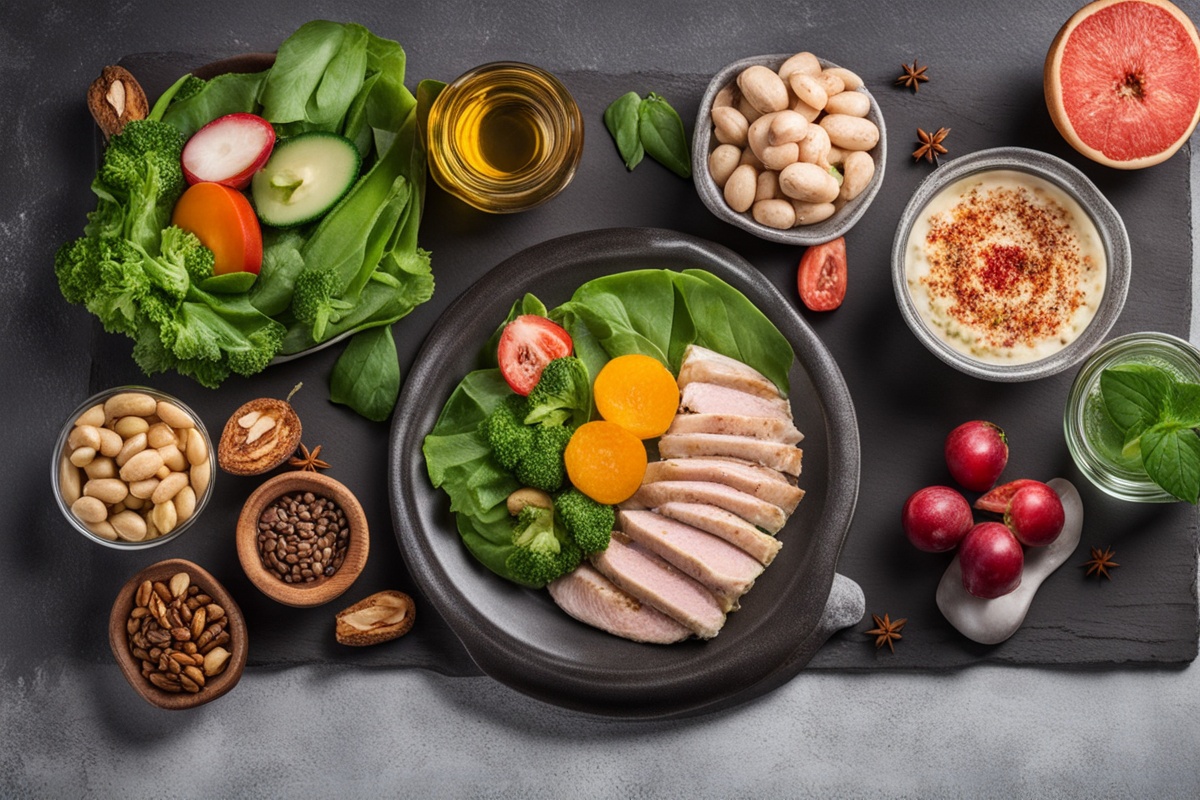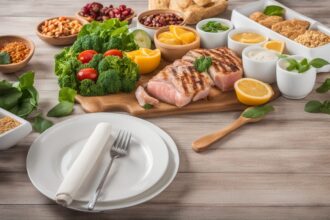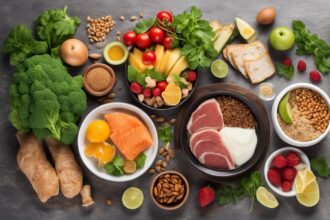Hey there, fasting enthusiasts! Whether you’re a seasoned faster or just dipping your toes into the world of intermittent fasting, one thing is clear: planning your meals around fasting windows can feel like a puzzle. That’s why I’m thrilled to share this comprehensive fasting guide packed with meal ideas, practical tips, and a sprinkle of science to help you thrive during your fasting journey. Fasting isn’t just about skipping meals; it’s about nourishing your body with the right foods at the right time to maximize health benefits like improved metabolic health and mental clarity (Horne et al., 2015). So, let’s dive into crafting a fasting-friendly eating plan that keeps you energized, satisfied, and on track with your wellness goals.
What Is Fasting and Why Does It Matter?
Fasting, at its core, is the practice of abstaining from food or drink for a specific period. From intermittent fasting (like the popular 16:8 method) to religious fasts such as Ramadan, this age-old practice has gained modern attention for its potential health perks. Research suggests fasting can support weight management, enhance insulin sensitivity, and even promote cellular repair through autophagy (Patterson & Sears, 2017). But here’s the catch: fasting isn’t a free pass to eat whatever you want during eating windows. A solid fasting guide emphasizes quality nutrition to avoid energy crashes or nutrient deficiencies. This is where strategic meal planning becomes your best friend, ensuring you break your fast with foods that fuel rather than drain you.
Key Principles for Fasting Meal Planning
Before we jump into specific fasting meal ideas, let’s lay down some ground rules for crafting meals that align with your fasting goals. The focus should be on balance—think protein, healthy fats, and complex carbs to stabilize blood sugar and keep hunger at bay (Johnstone, 2015). Hydration is also non-negotiable; even during fasting hours, water and unsweetened teas can prevent dehydration, especially during longer fasts. Timing matters too—breaking your fast with a small, easily digestible meal can prevent bloating or discomfort. As part of this fasting guide, I’ll walk you through how to prioritize nutrient-dense foods and avoid common pitfalls like overeating after a fast.
Meal Ideas for Breaking Your Fast
After hours of fasting, your body craves nourishment, but diving into a heavy meal can shock your system. Instead, ease back into eating with light, nutrient-packed options. Here are some ideas tailored to different fasting schedules, ensuring you get the most out of this fasting guide:
- Bone Broth with Veggies: A warm cup of bone broth is gentle on the stomach and rich in collagen and minerals. Add a handful of steamed spinach or zucchini for extra nutrients.
- Avocado Toast on Whole-Grain Bread: Half an avocado spread on a slice of whole-grain toast provides healthy fats and fiber to stabilize energy levels post-fast.
- Greek Yogurt with Berries: A small bowl of plain Greek yogurt topped with a handful of blueberries offers protein and antioxidants without overloading your digestive system.
- Poached Eggs with Greens: Two poached eggs over a bed of sautéed kale or arugula deliver protein and iron, perfect for a gentle reintroduction to food.
Fasting-Friendly Meals for Eating Windows
Once you’ve broken your fast, it’s time to focus on balanced meals during your eating window. Whether you’re following a 16:8 intermittent fasting plan or a 5:2 approach, these meal ideas will keep you full and fueled while aligning with fasting health tips. Studies show that prioritizing whole foods during eating windows can enhance fasting’s metabolic benefits (Tinsley & La Bounty, 2015). Here are some hearty yet healthy options to include in your fasting guide toolkit:
- Quinoa and Roasted Veggie Bowl: Combine cooked quinoa with roasted sweet potatoes, broccoli, and chickpeas, drizzled with tahini for a plant-based protein punch.
- Grilled Salmon with Asparagus: A 4-ounce salmon fillet paired with steamed asparagus and a side of brown rice offers omega-3s and fiber for sustained energy.
- Turkey and Veggie Stir-Fry: Sauté lean ground turkey with bell peppers, zucchini, and spinach in olive oil, seasoning with turmeric for anti-inflammatory benefits.
- Lentil Soup with Whole-Grain Bread: A bowl of hearty lentil soup, rich in fiber and iron, paired with a slice of whole-grain bread, keeps you satisfied for hours.
- Chicken Avocado Salad: Mix grilled chicken, avocado chunks, cherry tomatoes, and mixed greens with a lemon-olive oil dressing for a refreshing, nutrient-dense meal.
Snacks to Support Your Fasting Journey
Snacking during eating windows can be a game-changer if done right. The goal is to choose foods that prevent energy dips without derailing your fasting benefits. Overindulging in sugary or processed snacks can spike insulin levels, counteracting fasting’s effects on metabolic health (Anton et al., 2018). Instead, opt for small, nutrient-dense bites that complement this fasting guide. Think of snacks as mini-meals that bridge the gap between main dishes, keeping hunger in check and supporting your overall fasting diet plan.
Hydration and Non-Caloric Drinks During Fasting
While food is off the table during fasting hours, staying hydrated is crucial. Dehydration can mimic hunger, leading to unnecessary cravings or fatigue (Popkin et al., 2010). Water should be your go-to, but if you’re craving variety, unsweetened herbal teas, black coffee, or even a splash of apple cider vinegar in water can keep things interesting without breaking your fast. This fasting guide wouldn’t be complete without stressing the importance of fluids—aim for at least 8–10 cups of water daily, adjusting based on activity level or climate. Pro tip: Keep a reusable water bottle handy to sip throughout the day, even during fasting windows, to maintain energy and focus.
As we wrap up this fasting guide, I hope you’re feeling inspired to experiment with these fasting meal ideas and tips. Fasting isn’t about deprivation—it’s about intentional eating that supports your body’s natural rhythms. By focusing on nutrient-dense foods, staying hydrated, and listening to your body’s cues, you can make fasting a sustainable part of your lifestyle. Remember, everyone’s journey is unique, so tweak these suggestions to fit your needs, and don’t hesitate to consult a healthcare professional if you’re new to fasting or have underlying health conditions. Here’s to nourishing your body, one mindful meal at a time!
References
- Obesity, 26(2), 254-268.
- Horne, B. D., Muhlestein, J. B., & Anderson, J. L. (2015). Health effects of intermittent fasting: Hormesis or harm? A systematic review. The American Journal of Clinical Nutrition, 102(2), 464-470.
- Johnstone, A. (2015). Fasting for weight loss: An effective strategy or latest dieting trend? International Journal of Obesity, 39(5), 727-733.
- Annual Review of Nutrition, 37, 371-393.
- Popkin, B. M., D’Anci, K. E., & Rosenberg, I. H. (2010). Water, hydration, and health. Nutrition Reviews, 68(8), 439-458.
- Tinsley, G. M., & La Bounty, P. M. (2015). Effects of intermittent fasting on body composition and clinical health markers in humans. Nutrition Reviews, 73(10), 661-674.






